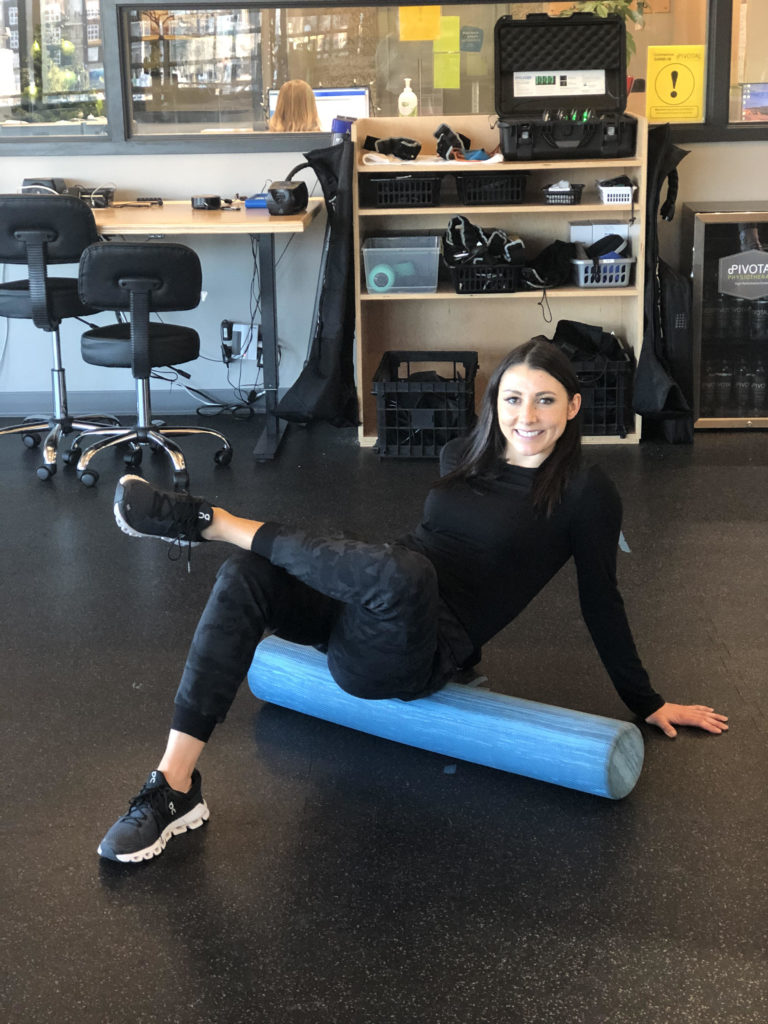A common theme within athletic populations is neglecting to prioritize a cool down and recovery routine. This is especially true with runners. Runners are notorious for not taking the time to stretch, roll and recover after a run. There are many reasons why this is the case. Runners, and most athletic people, live for the grind. They crave the work, the sweat, the endorphins, and thus they prioritize their time with those goals in mind. As an avid runner myself, I personally relate to that grind. Therefore, I’m here to share 3 habits you need to establish to improve your post-run recovery routine.
Why post-run recovery is important
Obviously, prioritizing exercise is very important. However, recovery is just as important as the workout. Recovery allows our muscles to repair and rebuild so we can come back stronger in our next run. Without rest or recovery, our tissues are in a constant state of breakdown, and this can lead to overtraining symptoms.
The 3 habits you need to establish to improve your post-run recovery routine
So how can we get runners to start including recovery into their already busy routines? You heard the why, now let’s talk about the how. Here are some simple steps to improving your recovery post-run:
- Active Cool Down: 400-800m of walking/jogging at the end of your run. An easy pace just to flush out the muscles.
- Stretching or Self Myofascial Release: We don’t need hard and fast rules here. Choose the form of tissue recovery you enjoy best. Whether it is stretching, foam rolling, or yoga. You are much more likely to perform something you enjoy.

Stretching – Think hamstrings, hip flexors, quads, glutes and calves
- 2-3 sets of 30s per body part.
- 10-15 min total while the muscles are still warm to maximize tissue flexibility.
Self Fascial release (SFMR) – Think foam rollers, lacrosse balls, tiger tails, spikey balls, thera-guns etc.
- Take your time. Studies show that spending 1-3 minutes per body site will provide the best results Ideally, aim for approx 15-20 minutes’ post exercise. But even if it is only 5-10min, some is better than none.
- Make sure you move slowly and methodically. If you find a particularly tight knot, spend some extra time on that area in order for it to release. If a specific spot in your muscle is too sore, work around it until your body can tolerate pressure on that point without extreme pain.
Fascial release helps you handle tight fascia, which is associated with increased DOMS (delayed onset muscle soreness), poor biomechanics, poor body alignment and reduced muscle strength/function.

(For more info on Foam Rolling and Self myofascial release (SFMR), check out Robyn’s article on yegfitness.ca)
- Hydrate and Fuel
Hydrate – Water can help improve recovery and performance, as well as prevent injury or cramping. Maintaining hydration regulates our recovery by bringing energy to cells, replacing lost fluid from sweat, cushioning our joints and reducing body temperature. The amount you need depends on the duration of your workout and how much you sweat. But, let’s keep it simple and drink at minimum a large glass after a run, or drink to your thirst levels.
Fuel – Your body is designed to use nutrients from food efficiently after a run so don’t skip this step. Post run recovery meals should include plenty of carbohydrates and protein.. Carbohydrates will help refuel your glycogen stores after a long run, and protein is essential for building and repairing muscle.Eg. whole grain breads or cereals, fruits, vegetables, eggs, lean meats, or a vegetable protein
What will prioritizing post-run recovery do for me?
Improve your range of motion
Multiple studies have shown improvement in range of motion of the ankle, hip, knee and lumbar areas after fascial release and stretching. Research suggests that foam rolling can increase ROM by increasing tissue temperature and changing the fascia from a more solid-like gel to a fluid state.
Reduce DOMS
Various amounts of pain and inflammation can be associated with exercise depending on the intensity, duration and type of exercise performed. Delayed onset muscle soreness is the tenderness/stiffness upon palpation or movement of a muscle as a response to the micro trauma induced during exercise. Therefore, cool downs, stretching/SMFR and hydrating can lead to quicker recovery and faster return to exercise.
Improved Subsequent Runs/Workouts
Many researchers have studied the effects of SMFR on muscle performance. The exact mechanisms are not clear, however the evidence suggests that SFMR plays a role in reducing neural inhibition, thus enhancing communication between the brain and the muscles. Same goes for proper fuelling and hydration.
Robyn Carignan MScPT, Certified Fascial Stretch Therapy (FST) Therapist
Physiotherapist at Pivotal Physiotherapy
Ask me a question!
Book an appointment with Robyn
Instagram: physiorobyn
